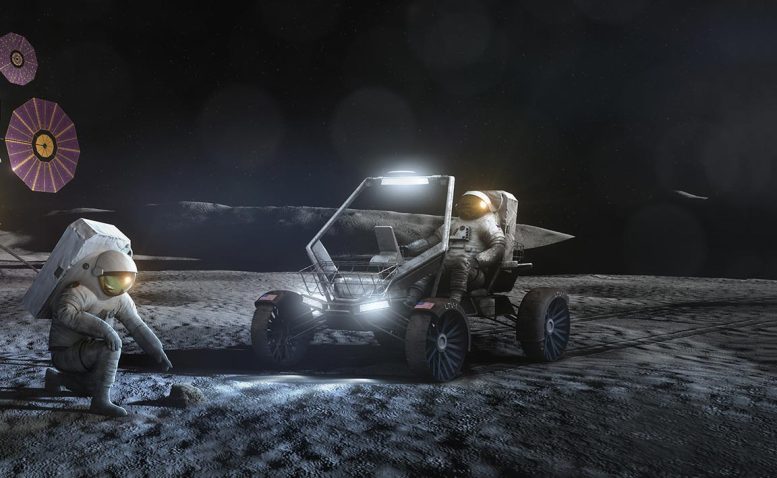During Artemis missions, as NASA astronauts explore the South Pole region of the Moon, they will be able to go farther and conduct more science than ever before using a new Lunar Terrain Vehicle (LTV). Instead of owning the vehicle, NASA plans to contract it from the private sector as a service.
NASA will accept feedback until December 1 on the draft request for proposals for the LTV Services (LTVS) contract, which is now ready for industry to review. The draft outlines NASA’s expectation for use of the LTV on the lunar surface in the 2028 timeframe. After taking industry feedback into account, NASA plans to issue a final request for proposals by early 2023.
Lara Kearney is the manager of the Extravehicular Activity (EVA) and Human Surface Mobility (HSM) Program at NASA’s Johnson Space Center in Houston. “This draft is one of the first important steps in this exciting project that will allow astronauts to explore farther on the Moon than ever before,” says Kearney. “Gaining industry feedback is crucial as we move forward in issuing a final request for proposal.”
Debuting during the Apollo missions, this iconic style of unpressurized, human-class rover is a cornerstone in NASA’s plans to develop a long-term presence on the lunar surface. While those human-driven vehicles expanded lunar exploration capabilities significantly, the new Artemis LTV will feature multiple upgrades and advanced technology.
Because Artemis missions will be targeting the lunar South Pole area, the new LTV must be able to withstand and operate in cold and unique lighting conditions. The Artemis LTV is also expected to be able to cover a range of hundreds of miles per year, enabling access to diverse locations that will facilitate science discoveries, resource prospecting, and exploration. It will also be capable of remote operation and will be available for other commercial uses when not carrying out NASA research and operations.
By contracting services from industry partners, NASA is able to leverage commercial innovation and provide the best value to U.S. taxpayers while achieving its human spaceflight and exploration goals. The contract will support continued science and long-term human exploration at the Moon under Artemis, which will land the first woman and first person of color on the lunar surface.
Learn more about this new approach to lunar surface exploration and NASA’s plans to contract for LTV services at: https://www.nasa.gov/jsc/procurement/ltv
- Karlston and aum
-

 2
2





Recommended Comments
There are no comments to display.
Join the conversation
You can post now and register later. If you have an account, sign in now to post with your account.
Note: Your post will require moderator approval before it will be visible.